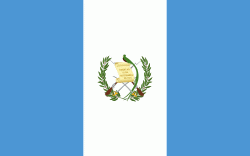Jocotenango
Jocotenango (alternate: Xocotenango; translation from Kaqchikel: "place of many plums") is a town and small municipality in the northeast section of Guatemalan department of Sacatepéquez, and is situated north of Antigua Guatemala. It has seven zones, two villages, and one hamlet. According to the 2018 census, the municipality has a total population of 21,657 of which 1,680 are native population and the balance are non-indigenous; and approximately 19,280 live in an urban area, while the balance are rural dwellers.
Jocotenango is the birthplace of multi Grammy Award-winning singer and songwriter Ricardo Arjona.
Jocotenango was initially an agricultural field, set up after the Spanish conquest by Adelantado, Pedro de Alvarado, as it was specified in his will, which read: "Called the lords and principals of the town that he had assigned to him, and ask that each one of them give him a certain number of families, and with them he created that settlement; he freed them and donated to them their land; and as the first natives who gathered there were from Utatlán, the town was called Utateca". So was founded the Santiago Utateca settlement. After the destruction of the old kingdom capital on 11 September 1541, the city was moved to Panchoy valley, and the K'achik'eles decided to follow the Spaniards and settled next to Santiago Utateca, founding Jocotenango; eventually both town combined. In the 1540, bishop Francisco Marroquín split the religious administration of the Guatemalan central valley between the Order of Preachers and the Franciscans, assigned the formet the Jocotenango curato, among others.
After the destruction of Santiago de los Caballeros de Guatemala by the Santa Marta earthquake in 1773, the city moved, this time to La Ermita valley. the old neighborhoods followed suit, among them: Jocotenango, Almolonga, San Pedro, San Gaspas and Nuestra Señora de Guatemala. Thus, there was a second Jocotenango settlement next to the new Guatemala City, which was eventually swallowed by the metropolis and is part of the modern Zone 2.
The old Jocotenango, previously considered a suburb, received municipality status in the middle of the 19th century.
Jocotenango is the birthplace of multi Grammy Award-winning singer and songwriter Ricardo Arjona.
Jocotenango was initially an agricultural field, set up after the Spanish conquest by Adelantado, Pedro de Alvarado, as it was specified in his will, which read: "Called the lords and principals of the town that he had assigned to him, and ask that each one of them give him a certain number of families, and with them he created that settlement; he freed them and donated to them their land; and as the first natives who gathered there were from Utatlán, the town was called Utateca". So was founded the Santiago Utateca settlement. After the destruction of the old kingdom capital on 11 September 1541, the city was moved to Panchoy valley, and the K'achik'eles decided to follow the Spaniards and settled next to Santiago Utateca, founding Jocotenango; eventually both town combined. In the 1540, bishop Francisco Marroquín split the religious administration of the Guatemalan central valley between the Order of Preachers and the Franciscans, assigned the formet the Jocotenango curato, among others.
After the destruction of Santiago de los Caballeros de Guatemala by the Santa Marta earthquake in 1773, the city moved, this time to La Ermita valley. the old neighborhoods followed suit, among them: Jocotenango, Almolonga, San Pedro, San Gaspas and Nuestra Señora de Guatemala. Thus, there was a second Jocotenango settlement next to the new Guatemala City, which was eventually swallowed by the metropolis and is part of the modern Zone 2.
The old Jocotenango, previously considered a suburb, received municipality status in the middle of the 19th century.
Map - Jocotenango
Map
Country - Guatemala
Currency / Language
| ISO | Currency | Symbol | Significant figures |
|---|---|---|---|
| GTQ | Guatemalan quetzal | Q | 2 |
| ISO | Language |
|---|---|
| ES | Spanish language |

















